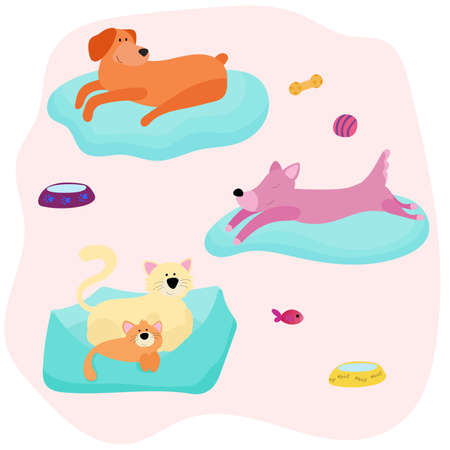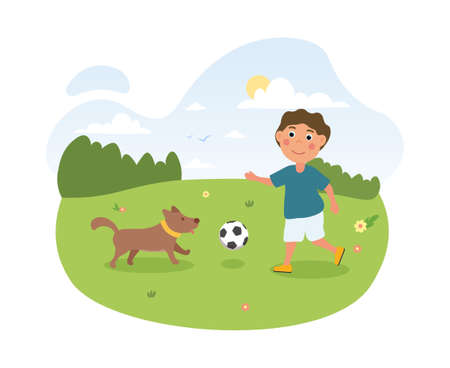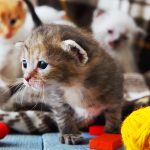1. Understanding Your Pets Play Style
Choosing the right toy for your pet starts with understanding their unique play style. Different pets have different preferences based on factors like breed, size, and personality. Some animals love to chase and fetch, while others prefer interactive puzzle toys that challenge their minds.
How Breed Influences Play Preferences
Certain breeds have natural instincts that influence how they play. For example:
| Breed Type | Play Preference |
|---|---|
| Retrievers (e.g., Golden Retriever, Labrador) | Love to fetch and carry objects in their mouths. |
| Herding Dogs (e.g., Border Collie, Australian Shepherd) | Enjoy chasing and problem-solving activities. |
| Cats (e.g., Siamese, Bengal) | Prefer toys that mimic hunting movements like feather wands or laser pointers. |
The Role of Size in Toy Selection
Your pet’s size also plays a major role in determining the best toy options. Small pets may struggle with large, heavy toys, while larger pets need durable toys that can withstand rough play.
Toy Size Guide
| Pet Size | Recommended Toy Type |
|---|---|
| Small (e.g., Chihuahua, Toy Poodle) | Soft plush toys, small chew toys. |
| Medium (e.g., Cocker Spaniel, Beagle) | Tug ropes, medium-sized balls. |
| Large (e.g., German Shepherd, Great Dane) | Tough chew toys, large rubber balls. |
Personality-Based Play Styles
Your pet’s personality is just as important as their breed and size when choosing a toy. Some pets are high-energy and need active toys, while others enjoy independent play.
Common Play Personalities
| Personality Type | Toy Recommendation |
|---|---|
| Energetic & Active | Balls, frisbees, interactive fetch toys. |
| Cautious & Shy | Softer plush toys, slow-paced puzzle games. |
| Mischievous & Curious | Puzzle feeders, treat-dispensing toys. |
| Aggressive Chewer | Tough rubber chew toys, rope toys. |
By considering your pet’s breed, size, and personality, you can select toys that keep them entertained and engaged while ensuring their safety and happiness.
2. Types of Toys and Their Benefits
Choosing the right toy for your pet isn’t just about fun—it’s also essential for their physical and mental well-being. Different types of toys serve different purposes, from keeping your pet active to stimulating their mind. Below, we explore various types of pet toys and how they can benefit your furry friend.
Chew Toys
Chew toys are perfect for pets that love to gnaw. They help relieve teething pain in puppies, reduce boredom, and promote dental health by cleaning teeth and strengthening jaws.
Benefits of Chew Toys:
- Helps with teething discomfort
- Reduces destructive chewing behavior
- Supports dental hygiene
Puzzle Toys
Puzzle toys challenge your pet’s brain by requiring them to solve a problem to get a reward, such as treats hidden inside.
Benefits of Puzzle Toys:
- Keeps pets mentally stimulated
- Reduces anxiety and boredom
- Encourages problem-solving skills
Interactive Toys
Interactive toys engage both you and your pet in playtime, strengthening the bond between you while providing exercise.
Examples of Interactive Toys:
- Tug-of-war ropes
- Laser pointers (for cats)
- Remote-controlled or motion-activated toys
Plush Toys
If your pet loves cuddling, plush toys provide comfort and companionship. Some even come with squeakers for added fun!
Benefits of Plush Toys:
- Great for pets that enjoy soft textures
- Can reduce separation anxiety
- Squeaky versions add excitement to playtime
Toy Comparison Table
| Toy Type | Main Benefit | Best For |
|---|---|---|
| Chew Toys | Dental health & teething relief | Puppies & aggressive chewers |
| Puzzle Toys | Mental stimulation & problem-solving skills | Cats & dogs needing enrichment |
| Interactive Toys | Bonds pets & owners through playtime | Pets that enjoy human interaction |
| Plush Toys | Cuddling & comfort for anxious pets | Cats & dogs that love soft textures |
No matter what type of toy you choose, always consider your pet’s size, personality, and play style to ensure a safe and enjoyable experience!

3. Safety Considerations When Choosing Toys
When selecting toys for your pet, safety should always be a top priority. The wrong toy can pose choking hazards, cause injuries, or even lead to digestive issues if swallowed. To ensure your furry friend stays safe while having fun, here are key factors to consider.
Choose the Right Size
A toy that is too small can easily become a choking hazard, while one that is too large might be difficult for your pet to play with. Always pick toys appropriate for your pet’s size and breed.
| Pet Size | Recommended Toy Size |
|---|---|
| Small (e.g., Chihuahuas, kittens) | Toys no smaller than a golf ball |
| Medium (e.g., Cocker Spaniels, adult cats) | Toys at least the size of a tennis ball |
| Large (e.g., Golden Retrievers, Maine Coons) | Toys bigger than a baseball |
Avoid Toxic Materials
Certain materials and chemicals in pet toys can be harmful if chewed or ingested. Look for non-toxic, BPA-free, and phthalate-free options. Avoid toys made with low-quality plastic or painted surfaces that could chip off.
Check for Loose Parts
Toys with small buttons, strings, or detachable pieces can be dangerous if swallowed. Opt for well-constructed toys without easily breakable parts.
Squeaky Toys: Fun but Risky
Squeaky toys can be entertaining, but some pets may try to chew them apart to get to the squeaker inside. If your pet is an aggressive chewer, supervise their playtime with squeaky toys or choose reinforced versions designed for heavy use.
Select Durable and Pet-Safe Materials
The durability of a toy depends on your pet’s chewing habits. Here’s a quick guide to safe materials:
| Toy Material | Best For | Avoid If… |
|---|---|---|
| Rubber (non-toxic) | Aggressive chewers like dogs who love gnawing | Your pet has allergies to synthetic rubber |
| Cotton Rope | Puppies and dogs that enjoy tug-of-war games | The rope starts fraying—replace it immediately |
| Nylon Bones | Persistent chewers who need long-lasting toys | Your pet tends to swallow large pieces when chewing |
| Plush Fabric | Cats and gentle chewers who love soft textures | Your pet rips out stuffing easily—risk of ingestion! |
Supervise Playtime for Added Safety
No matter how safe a toy seems, its always best to supervise your pet during playtime. Check their toys regularly for signs of wear and tear, and replace them when they start breaking apart.
A Quick Checklist for Safe Toys:
- No small detachable parts that could be swallowed.
- No toxic materials or strong chemical smells.
- The right size for your pet’s breed and chewing strength.
- No sharp edges or easily breakable components.
- Toys should be sturdy enough to withstand regular play.
Your pet’s safety comes first! By carefully selecting durable, non-toxic, and appropriately sized toys, you can create a fun and secure play environment for them.
DIY vs. Store-Bought Toys
When it comes to keeping your pet entertained, you have two main options: making toys at home or buying them from a pet store. Both choices have their benefits and drawbacks, so lets break them down to help you decide which is best for your furry friend.
Pros and Cons of DIY Pet Toys
Homemade toys can be a fun and creative way to provide entertainment for your pet. They often use household items, making them an affordable option. However, they may not always be as durable or safe as store-bought toys.
| Pros | Cons |
|---|---|
| Cost-effective – Uses materials you already have | Might not be as durable as commercial toys |
| Customizable – Tailor the toy to your pet’s preferences | If not made correctly, could pose safety risks |
| A fun DIY project for pet owners | Takes time and effort to create |
Pros and Cons of Store-Bought Pet Toys
Toys from pet stores are designed with safety and durability in mind. They come in a variety of shapes, sizes, and materials suited for different pets. However, they can be more expensive and may not always hold up to aggressive chewers.
| Pros | Cons |
|---|---|
| Designed with pet safety standards in mind | Can be expensive compared to DIY alternatives |
| Diverse options for different pet needs and preferences | Pets may lose interest quickly in some toys |
| Tends to be more durable than homemade toys | Certain materials may not be eco-friendly or safe if ingested |
Which Option Is Best for Your Pet?
The choice between DIY and store-bought toys depends on your pets play style, chewing habits, and your budget. If your pet enjoys simple interactive toys and you love crafting, DIY might be a great option. On the other hand, if durability and safety are your top concerns, investing in high-quality store-bought toys could be the better choice.
A Balanced Approach
You don’t have to choose just one! Many pet owners find a balance by using a mix of homemade and store-bought toys. This way, pets get variety while also benefiting from the durability of commercial products.
5. Keeping Your Pet Engaged with the Right Toys
Keeping your pet entertained isn’t just about giving them a toy and hoping for the best. Pets, like humans, can get bored if they play with the same toys every day. To keep things exciting and mentally stimulating, its important to rotate their toys and introduce new ones strategically.
How to Rotate Your Pet’s Toys
Rotating toys helps maintain your pet’s interest while preventing overstimulation or boredom. Here’s a simple way to do it:
| Rotation Frequency | What to Do |
|---|---|
| Daily | Swap out one or two toys from their current selection. |
| Weekly | Introduce a completely new toy and put away an old one. |
| Monthly | Assess which toys are still engaging and replace any that are worn out. |
The Best Way to Introduce New Toys
Your pet might not immediately take to a new toy, so introducing it properly can make all the difference:
- Add Scent: Rubbing the toy with something familiar, like their bedding or a treat, can make it more appealing.
- Create Excitement: Use positive reinforcement by playing with the toy yourself and encouraging interaction.
- Avoid Overloading: Too many new toys at once can overwhelm your pet. Introduce one at a time.
Toy Types That Keep Pets Mentally Stimulated
Certain types of toys are better at keeping pets engaged for longer periods. Consider these options:
| Toy Type | Description | Best For |
|---|---|---|
| Puzzle Toys | Toys that require problem-solving, like treat-dispensing balls. | Cats & Dogs |
| Squeaky Toys | Toys that make noise when bitten or squeezed. | Mainly Dogs |
| Interactive Laser Toys | Lazers or motion-activated toys that encourage movement. | Mainly Cats |
| Chew Toys | Tough toys designed for chewing, great for dental health. | Mainly Dogs |
| Tunnel Toys | Tunnels for hiding and running through. | Cats & Small Pets |
The Importance of Observing Your Pet’s Interest Level
If your pet seems uninterested in a toy, don’t force it. Some pets have preferences just like we do! Observe how they interact with different types of toys and adjust accordingly. A mix of rotating old favorites and introducing fresh options will ensure they stay happy and engaged.
Final Tip: Make Playtime Interactive!
No matter what toys you choose, spending time playing with your pet strengthens your bond and keeps them active. Whether it’s a game of fetch, tug-of-war, or chasing a laser pointer, interactive play is one of the best ways to ensure your pet stays happy and healthy!


